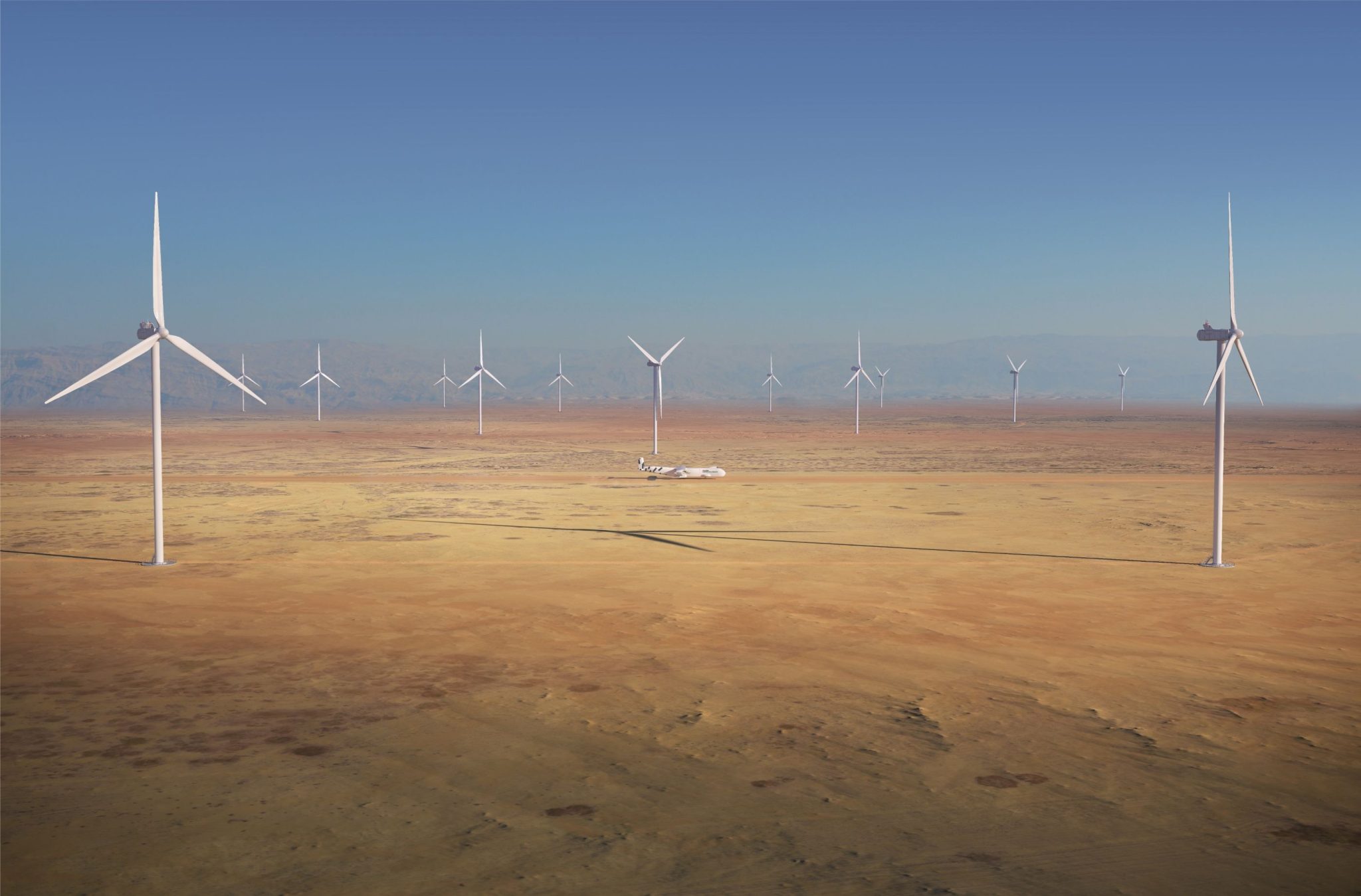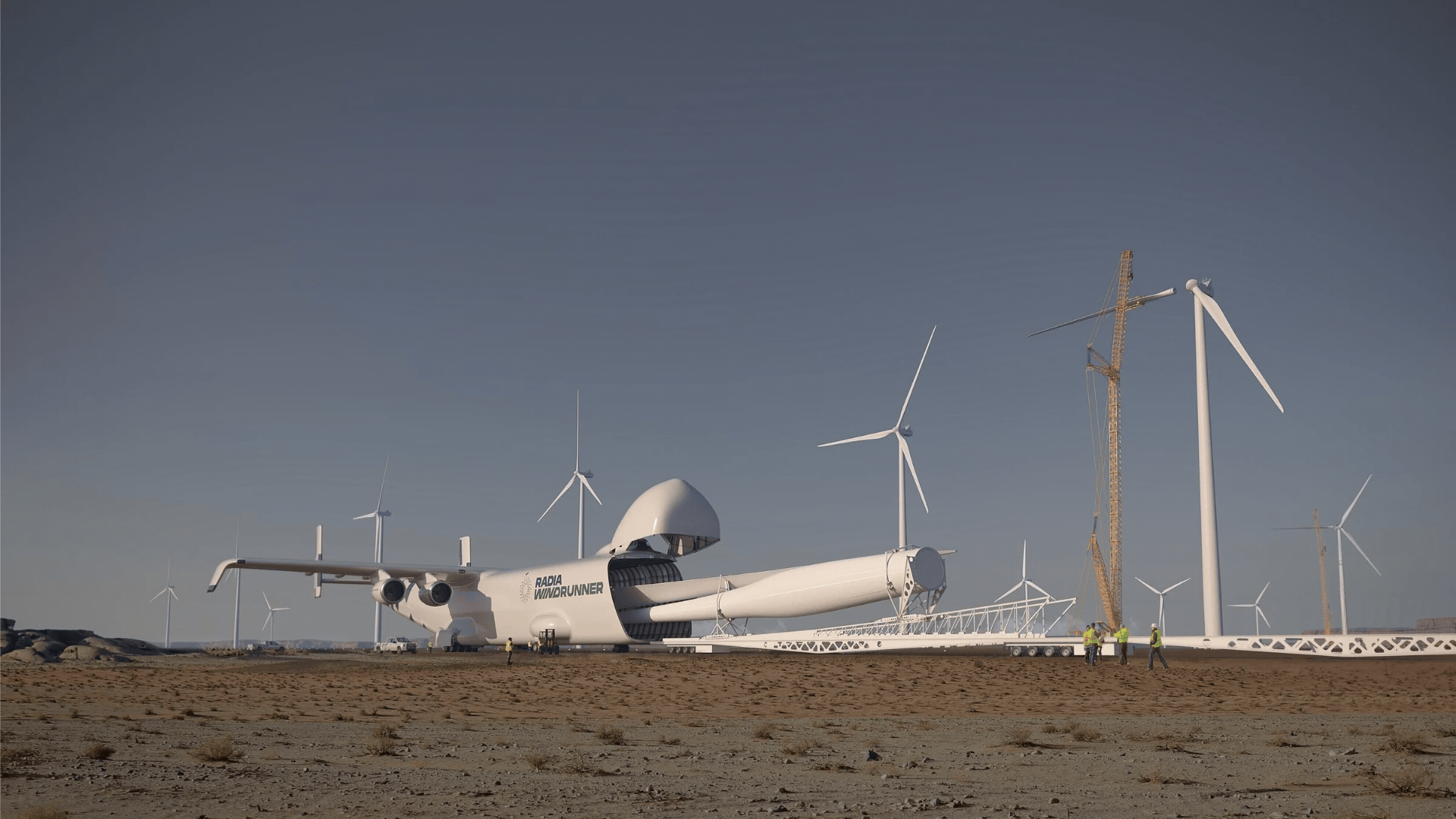
Radia’s WindRunner, currently in development and touted as the world’s largest aircraft, will be capable of transporting wind turbine blades more than 100 m long.
Story by Lachlan Haycock and Joseph Harding
Wind turbines are massive things, often in excess of 150 m tall. And they have blades to match. In Australia, these are typically between 40-90 m long. Overseas, where offshore wind is often king, they can be even bigger. But as the global appetite for wind energy grows, so does the demand on infrastructure in Australia and beyond.

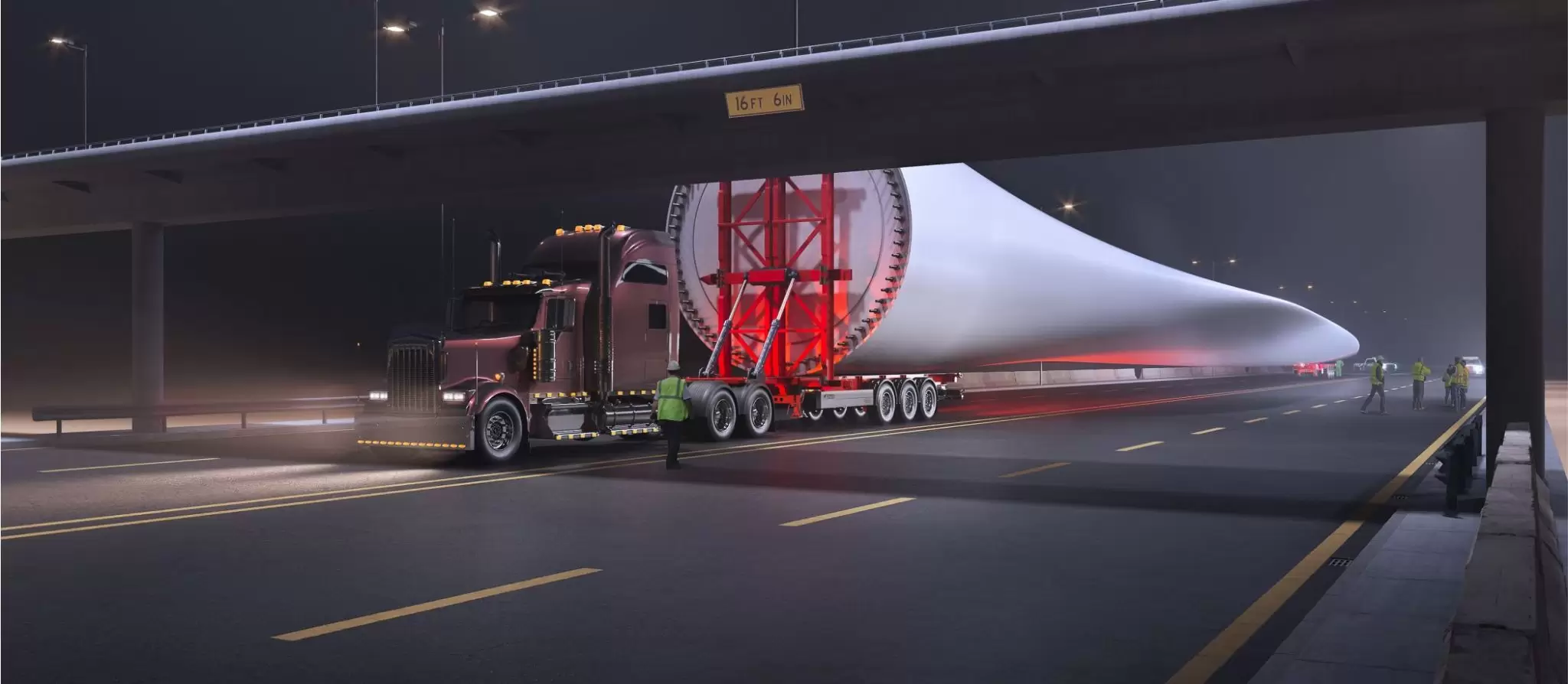
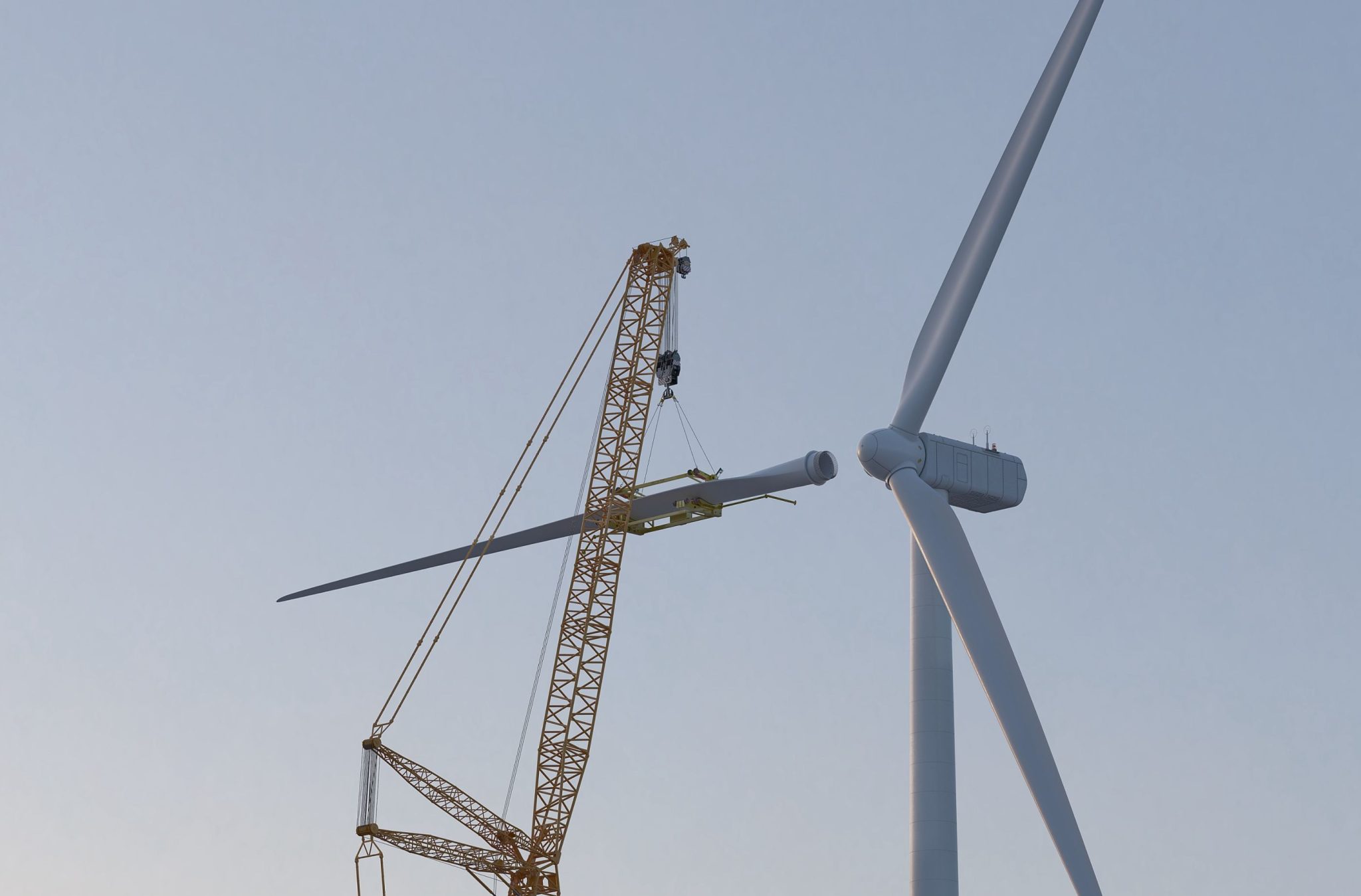
A proposal for 270 m-tall wind turbines on Robbins Island in Tasmania, although divisive, goes to show the scope envisioned by certain companies. But roads can only handle blades of a certain length. So how do companies enable the transportation of ever more ambitious renewable energy generation?
Enter Radia. Enter WindRunner.

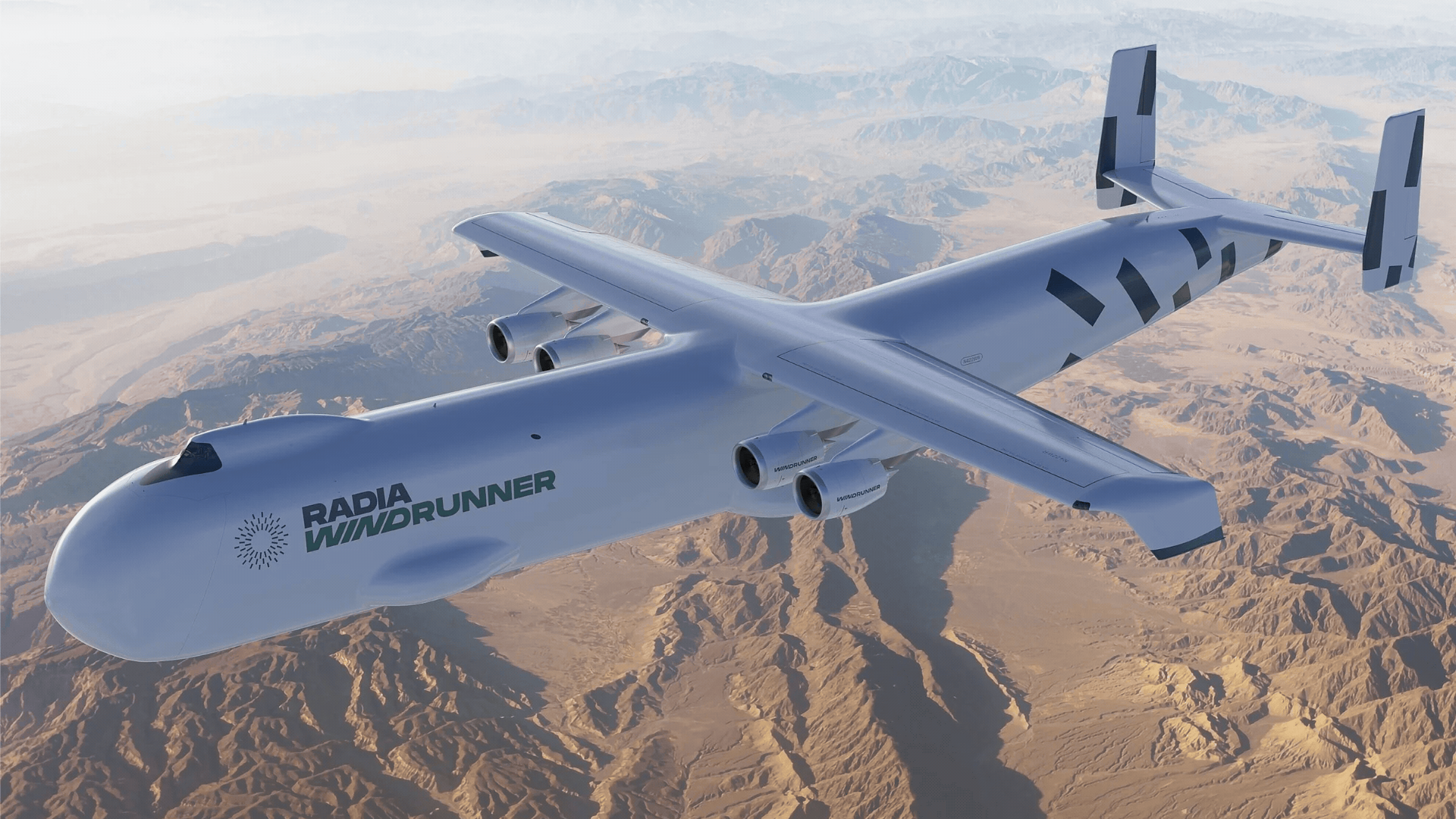
WindRunner boasts the world’s largest payload bay, loads cargo through its nose and can carry a maximum payload of more than 72,000 kg.
Founded in 2016, the venture capital-funded Radia has its sights set on revolutionising the wind energy industry.
Its design for extra-large onshore wind turbines, called GigaWind, intends to take the scale of offshore wind and implement it in an onshore wind setting. Longer blades and a greater height would produce energy at just 70 per cent of the cost, according to the company.
Despite being highly scalable, Radia says GigaWind is too large to transport by land, and as a result has committed to building a fleet of proprietary aircraft powered by a sustainable fuel alternative: WindRunner.


The plane boasts a payload capacity greater than any other aircraft and is noticeably more capacious than the Russian behemoth, the Antonov An-124 Ruslan, and the Boeing 747-400 model. The WindRunner has 12 times the payload volume than the Boeing 747-400, and is almost 38 m longer.
Rachel Kelley, Vice-President of Aircraft Development and Chief Engineer at Radia, explained several key distinctions between the WindRunner and other aicraft models.
“WindRunner has the same 80 m wingspan as an Airbus A380, but the aircraft is optimised for fuselage length and volume rather than payload weight,” she told create. “The aircraft has about half the maximum payload of the 747-8 freighter but more than 11 times the volume.
“Design features are also mission-specific. They include a high wing, a kinked fuselage to prevent tailstrike, ground-level cargo loading and unloading through a nose cargo door, and multi-truck landing gear for operating on semi-prepared runway surfaces.”
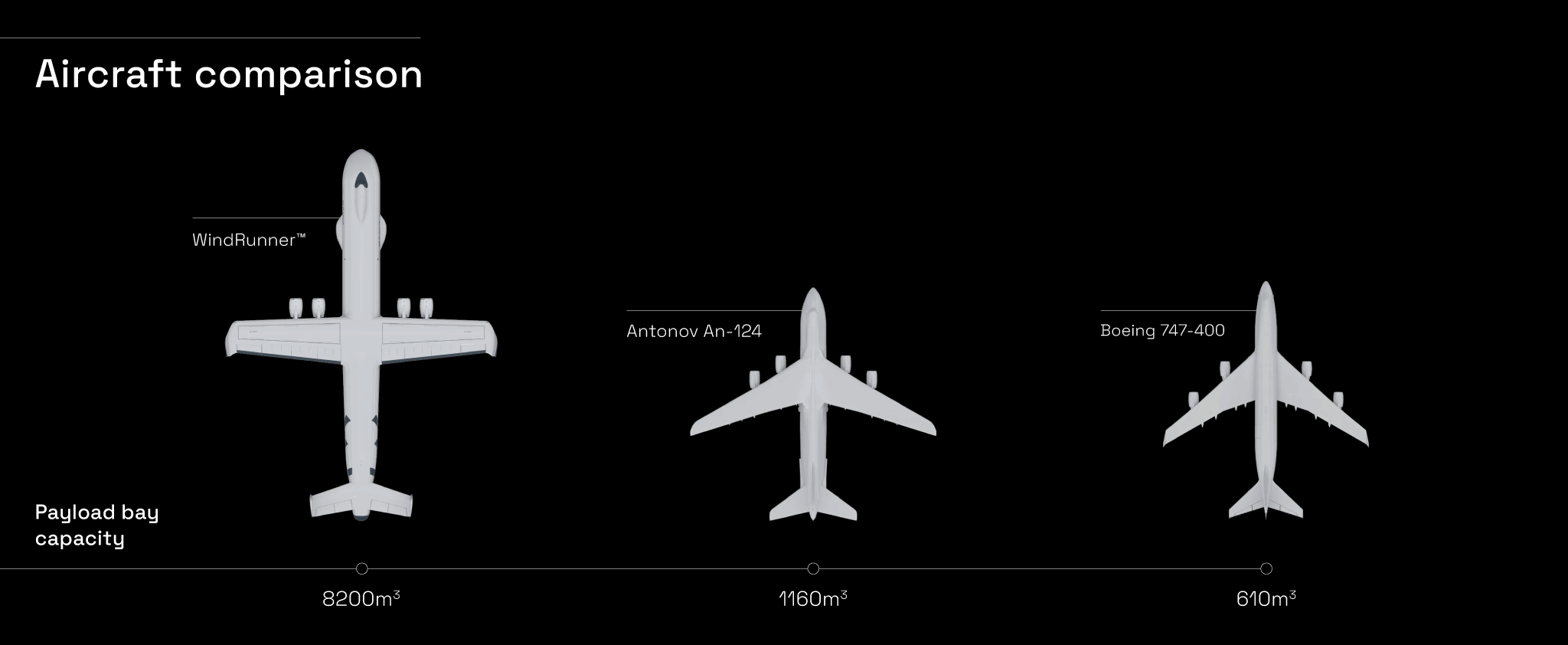
The choice for the materials used in manufacturing was made with intention.
“[We] chose classic aluminium paneling for its fuselage instead of composites because that makes construction easier and more modular, and it makes the aircraft easier to maintain and operate for the long term,” Kelley explained. “The fact that it is largely unpressurised results in less [structural] load and reduces the number [and] size of subsystems needed. The fact that there are no passengers means fewer subsystems to design and certify, and fewer regulations to comply with.
“Radia also plans to use a certified, in-production engine with more thrust than WindRunner will ever truly need to protect against possible weight increases over the course of development. It can operate below rated thrust and in a smaller flight envelope.”
She described the WindRunner project as innovative, but not so outside the box as to complicate manufacturing.
“[This] lends itself to … smooth and predictable development. The mission permits sensible limitations on requirements – only the flight deck is pressurised, and WindRunner cruises slightly slower than a commercial airliner.”
A novelty of this design is the placement of the cockpit, which is quite high atop the nose of the plane. Kelley said these were “relatively common” in the industry.
“You can see examples in the Boeing 747 or the Lockheed Martin C-5,” she said. “High wings are also common with many examples including Lockheed Martin C-5, Boeing C-17 Globemaster, Lockheed Martin C-130, Antonov An-124, Antonov An-225.
“The landing gear configuration lends itself to operating on dirt strips by having [multiple] large tires, a design methodology that is widely accepted.”

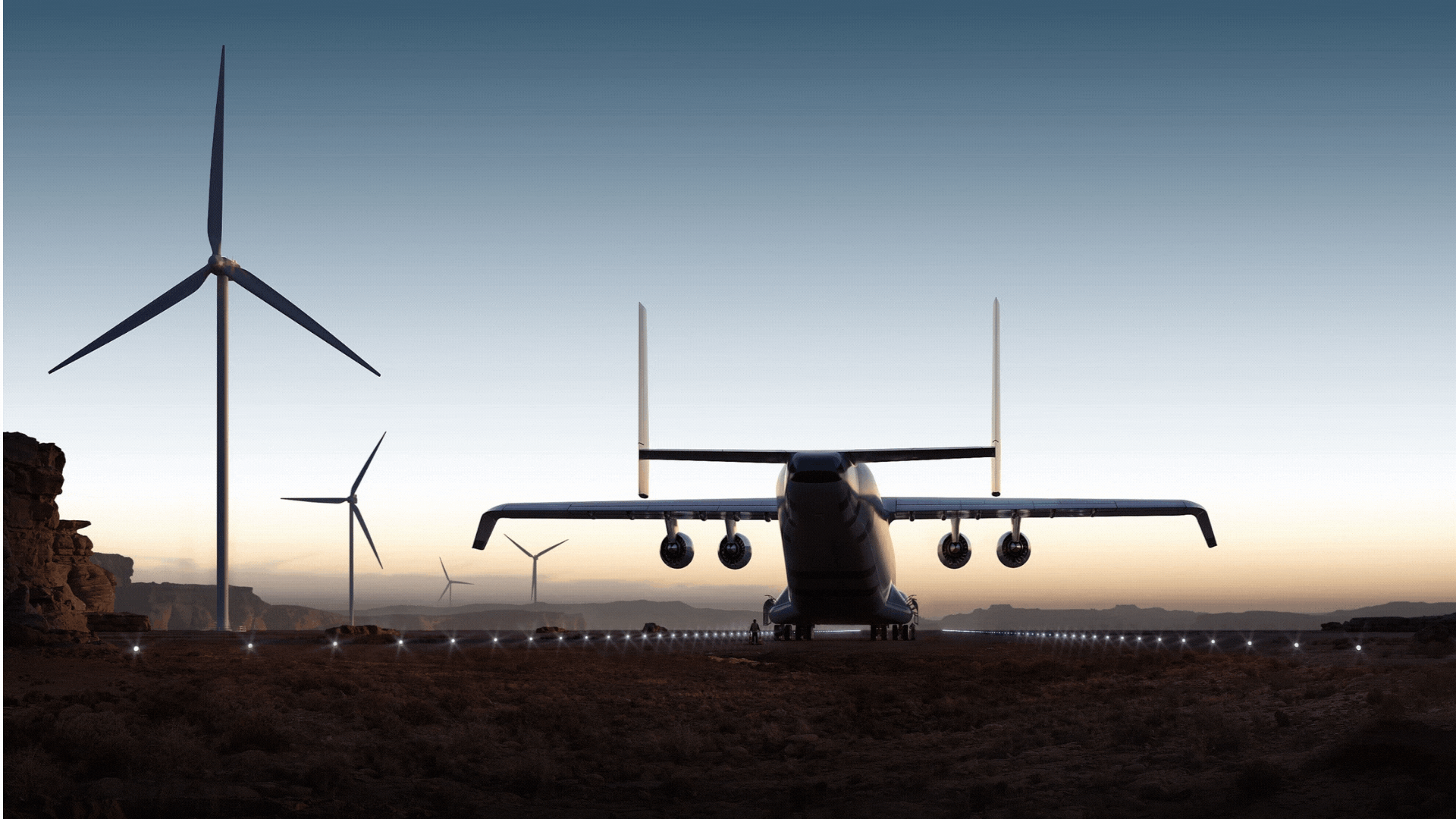
In the WindRunner, speed and efficiency considerations were matched by an embrace of a more sustainable fuel option.
Kelley said WindRunner would eventually run completely on sustainable aviation fuel (SAF).
“Globally, aviation accounts for two per cent of all human-caused carbon dioxide emissions and 12 per cent of all transportation carbon dioxide emissions, according to the US Department of Energy,” she said. “When compared with conventional jet fuel, 100 per cent SAF can potentially cut greenhouse gas emissions by up to 94 per cent depending on feedstock and technology pathway.”
One might imagine a massive aircraft of this ilk to fly high and fast, but the reality is that WindRunner’s maximum cruising speed is just Mach 0.6.
“It flies slowly for a jet – but is still significantly faster than using road or rail,” Kelley said. “Radia made the conscious decision to fly slower with a high thrust margin to allow for WindRunner’s unswept, straight wing. That makes its flight behaviour and aerodynamics easier to model and understand, and enables the tremendous lift at the low speeds it needs to carry its large payloads.
“[Optimising] WindRunner … for volume rather than weight means that its runway requirements are much less than for a 747, which needs a paved runway at least 9,500 feet [2896 m] long.”

Radia has announced work to be done in conjunction with three partners:
Aernnova will partner with Radia on the development of the aircraft’s wing and engine pylons.
Leonardo will develop the fuselage.
AFuzion will provide safety and certification consulting.

“Scalability is a major focus of our aerospace innovation ecosystem,” Kelley said. “With no exotic edge-case engineering and with the design choices we have made, we expect that WindRunner can be [successfully] produced at scale.
“Our aerospace partners will have the opportunity to diversify into the energy industry, a less cyclical industry that represents a major market opportunity – onshore wind energy is expected to be up to a [US] $10 trillion market by 2050 – and to have a decisive impact on climate change.”
